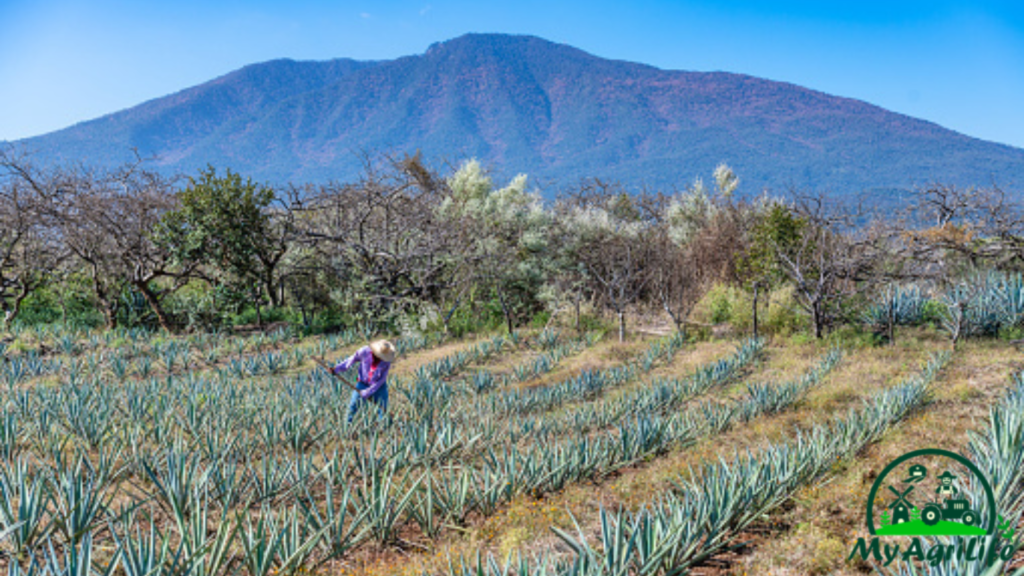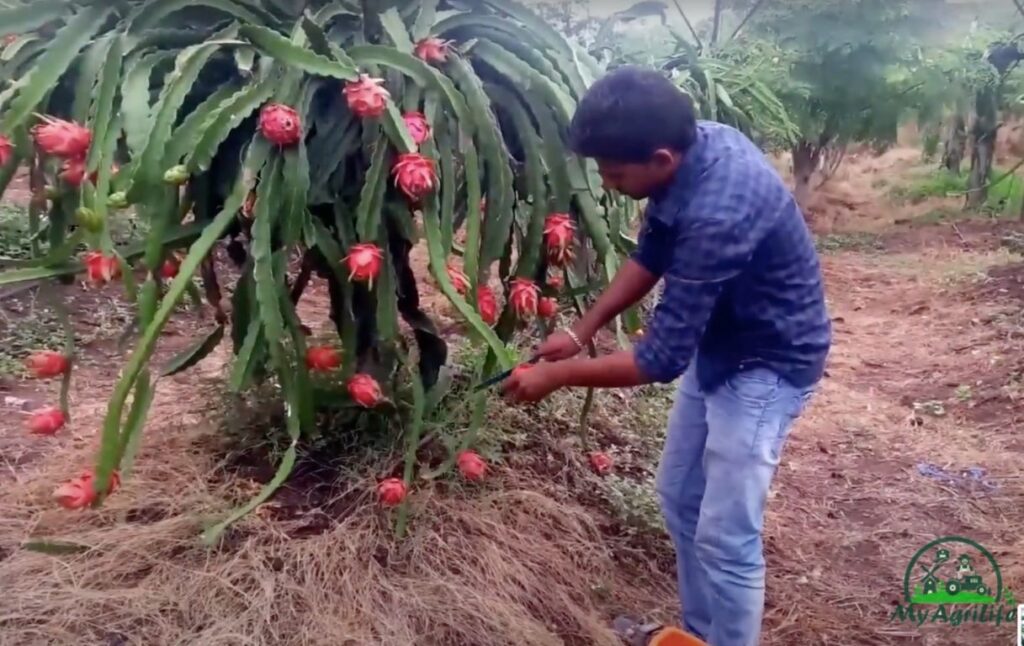
Pineapple is a tropical fruit that is to South America but is now grown in many parts of the world, including Southeast Asia and Hawaii. It is known for its sweet and tart taste and its spiky, rough exterior.
Pineapple is a good source of vitamin C, manganese, and dietary fiber. It also contains bromelain, an enzyme that has anti-inflammatory properties and may have other health benefits.
Pineapple can be eaten fresh or canned, and is often used in cooking and baking. It is a common ingredient in tropical drinks, and is sometimes used as a meat tenderizer in savory dishes.
When selecting a pineapple, look for one that is firm and heavy for its size, with a fragrant aroma at the base. To prepare a pineapple, cut off the top and bottom, then slice off the skin in vertical strips. Remove any remaining “eyes” with a paring knife, then cut the fruit into slices or chunks.
Seed Specification Pineapple
Pineapple plants are usually propagated by vegetative means such as suckers, slips, or crowns, rather than by seed. However, pineapple seeds can be obtained from the fruit, but they are not commonly used for commercial production because they do not produce true-to-type plants.

If you are interested in growing pineapple from seed, you will need to extract the seeds from a fresh fruit. The seeds are small and black, and are located in the flesh of the fruit.
To extract the seeds, cut the fruit into small pieces and blend or puree them in a food processor or blender. Strain the puree through a fine-mesh sieve to separate the seeds from the pulp.
Once you have the seeds, you can sow them in a well-draining potting mix in a small container. Keep the soil moist but not waterlogged, and place the container in a warm, humid location.
Pineapple seeds typically take several weeks to germinate, and the resulting plants may take several years to produce fruit.
It’s worth noting that pineapple plants produced from seed may not have the same characteristics as the parent plant, and may produce fruit that is smaller or less flavorful. For this reason, it’s usually recommended to propagate pineapple plants vegetatively rather than from seed.
Land Preparation & Soil Health Pineapple
Land preparation and soil health are important factors to consider when growing pineapple. Here are some guidelines for preparing the land and maintaining soil health:
Land preparation: Clear the land of weeds, rocks, and debris before planting. The soil should be plowed and tilled to a depth of at least 30 cm to break up any hardpan or compacted soil. After tilling, the soil should be leveled and ridged into planting beds.

Soil type: Pineapple prefers well-drained, sandy loam soils with a pH between 4.5 and 6.5. The soil should be rich in organic matter and have good water-holding capacity.
Soil fertility: Pineapple requires moderate levels of nutrients, especially nitrogen, phosphorus, and potassium. A soil test can help determine the nutrient levels in the soil and whether any fertilizers are needed. Organic matter such as compost or well-rotted manure can be added to the soil to improve fertility.
Soil moisture: Pineapple requires regular moisture, but the soil should not be waterlogged. The planting beds should be sloped to allow for good drainage. Irrigation should be provided during dry periods, especially during the first year of growth.

Weed control: Weeds can compete with pineapple plants for nutrients and water. It’s important to keep the planting area free of weeds. This can be achieved through regular weeding, mulching, or herbicide application.
Disease and pest control: Pineapple plants can be susceptible to various diseases and pests, such as fusarium wilt, mealybugs, and fruit flies. Proper sanitation practices and pest control measures should be implemented to minimize these risks.
Maintaining soil health is important for the long-term success of a pineapple plantation. Regular soil testing, fertilization, and pest management practices can help ensure healthy soil and productive plants.
Crop Spray & fertilizer Specification Pineapple
Crop spray and fertilizer application are important components of pineapple cultivation. Here are some guidelines for crop spray and fertilizer specification for pineapple:
Crop spray: Pineapple plants are susceptible to various pests and diseases, including mealybugs, scale insects, and fruit flies. Pesticides and fungicides should be applied as needed to control these pests and diseases. It is important to follow the label instructions for the specific product being used, and to apply the product at the recommended rate and frequency. Organic alternatives such as neem oil can also be used for pest control.

Fertilizer: Pineapple plants require moderate levels of nutrients, especially nitrogen, phosphorus, and potassium. A soil test can help determine the nutrient levels in the soil and whether any fertilizers are needed. It is important to apply the fertilizer at the right time and in the right amount to avoid overfertilization, which can lead to leaching and environmental pollution.
A common recommendation for pineapple fertilization is to apply 100-200 kg/ha of nitrogen, 100-150 kg/ha of phosphorus, and 200-250 kg/ha of potassium per year. The fertilizer can be applied in split doses throughout the growing season. Organic fertilizers such as compost or well-rotted manure can also be used to supplement the soil with nutrients.
Fertilizer application method: The fertilizer can be broadcasted on the soil surface or placed in holes dug around the base of the plants. Broadcasting is a quick and easy method but can result in uneven distribution of nutrients. Placing the fertilizer in holes can ensure better distribution of nutrients to the plant roots. It is important to avoid placing the fertilizer too close to the plant stem, as this can damage the roots.
Overall, it is important to monitor the growth and health of pineapple plants regularly and adjust crop spray and fertilizer applications as needed. Proper application of crop spray and fertilizers can help ensure healthy and productive pineapple plants.
Weeding & Irrigation Pineapple
Weeding and irrigation are important components of pineapple cultivation. Here are some guidelines for weeding and irrigation for pineapple:
Weeding: Weeds can compete with pineapple plants for nutrients and water, so it is important to keep the planting area free of weeds. Weeding can be done manually using hand tools or mechanically using cultivators or weeders. Pineapple plants have shallow roots, so it is important to be careful not to damage the roots during weeding.
Mulching can also be an effective method of weed control. Pineapple plants can be mulched with materials such as rice straw, coconut husk, or plastic mulch. The mulch helps to suppress weed growth, retain moisture in the soil, and regulate soil temperature.
Irrigation: Pineapple plants require regular moisture, but the soil should not be waterlogged. Irrigation should be provided during dry periods, especially during the first year of growth. The frequency and amount of irrigation will depend on the soil type, climate, and rainfall. In general, pineapple plants require about 25-50 mm of water per week.
Drip irrigation is a recommended method of irrigation for pineapple. Drip irrigation systems deliver water directly to the plant roots, minimizing water loss through evaporation and runoff. The system can be designed to provide a uniform supply of water to each plant.
It is important to avoid over-irrigation, as this can lead to waterlogging and root rot. The soil should be allowed to dry out slightly between irrigations. Soil moisture sensors can be used to monitor soil moisture levels and adjust irrigation accordingly.
Overall, it is important to maintain weed-free and well-irrigated conditions for healthy and productive pineapple plants. Regular monitoring and adjustments to weeding and irrigation practices can help ensure optimal plant growth and yield.
Harvesting & Storage Pineapple
Harvesting and storage are important aspects of pineapple cultivation to ensure that the fruit is of high quality and maintains its flavor and texture. Here are some guidelines for harvesting and storage of pineapple:

Harvesting: Pineapples are typically harvested when they are fully ripe, which is indicated by a change in color from green to yellow. The fruit should be harvested with a sharp knife, cutting the stem close to the fruit. Pineapples should be harvested in the morning when the temperature is cooler to minimize damage to the fruit.
Handling: Pineapples should be handled carefully to avoid damage to the fruit. The fruit should be handled gently to avoid bruising, which can cause the fruit to deteriorate. Pineapples should be transported in clean containers to avoid contamination and should not be stacked too high to avoid damage to the fruit.
Storage: Pineapples should be stored in a cool, dry place to maintain their quality. The ideal storage temperature for pineapples is between 7-10°C, with a relative humidity of 85-90%. Pineapples should not be stored at temperatures below 5°C as this can damage the fruit.

Ripening: If harvested before fully ripe, pineapples can be ripened at room temperature for a few days. Placing the pineapple in a paper bag can help accelerate the ripening process. Once ripe, the pineapple should be consumed within a few days or stored in the refrigerator.
Packaging: Pineapples can be packaged in boxes or crates for transport to markets. The fruit should be packed carefully to avoid damage during transport. Pineapples should not be packed too tightly to avoid damage to the fruit.
Overall, proper harvesting, handling, storage, and packaging of pineapples can help maintain the quality and freshness of the fruit and ensure that consumers receive a high-quality product.
Frequently Asked Questions Pineapple Farming
1.What is the best time to plant pineapple?
The best time to plant pineapple depends on the climate and growing conditions in your region. In general, pineapple can be planted during the warmest months of the year when temperatures are consistently above 60°F (15°C).
2.How long does it take for a pineapple to mature?
It takes approximately 18-24 months for a pineapple plant to mature and produce fruit.
3.How often should I water my pineapple plants?
Pineapple plants require regular moisture, but the soil should not be waterlogged. Irrigation should be provided during dry periods, especially during the first year of growth. The frequency and amount of irrigation will depend on the soil type, climate, and rainfall. In general, pineapple plants require about 25-50 mm of water per week.
4.How do I control weeds in my pineapple field?
Weeds can compete with pineapple plants for nutrients and water, so it is important to keep the planting area free of weeds. Weeding can be done manually using hand tools or mechanically using cultivators or weeders. Mulching can also be an effective method of weed control.
5.How do I harvest and store pineapples?
Pineapples are typically harvested when they are fully ripe, which is indicated by a change in color from green to yellow. The fruit should be harvested with a sharp knife, cutting the stem close to the fruit. Pineapples should be stored in a cool, dry place to maintain their quality. The ideal storage temperature for pineapples is between 7-10°C, with a relative humidity of 85-90%.
6.What are some common diseases that affect pineapple plants?
Some common diseases that affect pineapple plants include heart rot, black rot, and fusarium wilt. It is important to practice good sanitation and crop rotation practices to minimize the risk of disease in your pineapple field.
7.What are some common pests that affect pineapple plants?
Some common pests that affect pineapple plants include mealybugs, scales, and mites. Regular monitoring and control measures such as insecticides and beneficial predators can help minimize pest damage to your pineapple crop.
8.How do I fertilize my pineapple plants?
Pineapple plants require regular fertilization to maintain healthy growth and fruit production. A balanced fertilizer with a 6-2-12 or 8-4-16 NPK ratio can be applied every 2-3 months during the growing season. Organic fertilizers such as compost and manure can also be used to supplement soil nutrients.









